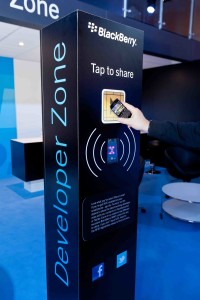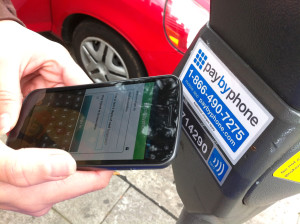
January 28th, 2016 by Elma Jane
The shift to EMV is helping to address vulnerabilities in the United States payments ecosystem. It has been shown that EMV can deliver benefits as a part of industry efforts to combat fraud.
EMV migration is a critical focus for enhancing payments security, which is why the current efforts around chip card deployment are greatly beneficial for consumers and merchants alike. EMV technology helps to reduce counterfeit card fraud, as it generates dynamic data with each payment to authenticate the card, after which the cardholder is prompted to sign or enter a PIN to confirm their identity.
The EMV rollout represents a dynamic time for card payments that promises great advances, among them is enhanced security for cardholders. It also presents an opportunity to consider other innovations such as mobile wallets and mobile POS to further engage your customers and drive customer loyalty. When merchants continue to invest in EMV and NFC (near field communications, used for tap-and-pay transactions), the purchases made at their EMV-enabled terminals are made more secure than magnetic stripe.
New mobile payment options such as mobile wallets support EMV and therefore offer this added layer of security. Ultimately, by enabling contactless payments, merchants can also enable more flexibility in addition to increasing security for their customers.
Additionally, industry players are backing major mobile wallets, such as Android Pay, Apple Pay, and Samsung Pay.
Posted in Best Practices for Merchants, Credit Card Security, EMV EuroPay MasterCard Visa, Smartphone Tagged with: card, cardholder, chip card, consumers, contactless payments, customers, data, EMV, fraud, magnetic stripe, merchants, mobile, mobile payment, mobile wallets, near field communications, nfc, payments, PIN, POS, Security, terminals, transactions
October 1st, 2013 by Elma Jane
As Capital One drops support Isis’ future darkens
Capital One pulling its support points to the challenges that near-field-communications is having with scale as non-NFC mobile wallet initiatives take off, as Isis gears up for a broader launch.
Capital One was one of Isis’ three founding card issuers, and the company’s drop of support as the company prepares for a larger roll-out emphasizes the challenges in gaining scale and momentum for mobile payments. PayPal and Apple’s recently announced their own mobile payment options that also avoid NFC reflect the opportunity that marketers see in services beyond NFC.
“Capital One dropping its support for Isis is significant in what it telegraphs about the problems issuers will continue to face with the wallet provider.” “Issuers must pay each time a consumer loads their card onto the wallet.”
“The caveat is that whether or not a consumer uses the card, the issuer must pay to have it in the Isis Wallet. Card issuers are interested in encouraging card spend whereas Isis is purely interested in getting consumers to link their cards to the wallet. This conflict of interest will continue to be problematic.”
Losing support
Capital One pulling its support from Isis could indicate that the financial institution did not see a substantial amount of consumers using their mobile devices to pay during the pilot for repeat visits, which is key in driving consumer adoption ahead. The number of mobile payment options available for card issuers to partner with is clearly growing, meaning that Capital One might see a bigger opportunity elsewhere.
However, Capital One’s pull-out could be well-timed since Isis is signing new partners, and Isis has an opportunity to recover quickly. “Many financial institutions and merchant acquirers see PayPal and Apple as threats and the moves that these companies are making could cause financial institutions, payment networks and acquirers to accelerate their mobile payments efforts in response to the perceived threat.” Since Isis is looking to partner with the financial institutions, payment networks and acquirers, the moves made by Apple and PayPal could drive partners into Isis’ embrace.
Google expands mobile wallet
Yesterday Google made a significant upgrade to Google Wallet that continues to focus on NFC, but also adds additional payment options for consumers. The Google Wallet app has been updated to let consumers send money to friends and family in the U.S. via an email address. Consumers can either send money directly from their bank account or from Google Wallet balance. Additionally, the app is now available for all Android devices that run the 2.3 operating system and higher. Previously, Google Wallet was only available on select Android devices. Consumers can also store loyalty cards from retailers that can be redeemed by scanning a mobile device in-store. Similar to Apple’s Passbook, Google Wallet will now also alert consumers when they are nearby to a store where they have a loyalty program.
Google said that it plans to support the one of 29 different NFC-enabled devices with NFC, but the company’s focus on additional features points to NFC as un-scalable by itself. In fact, Yankee Group estimates that 18 percent of device owners have a mobile device that supports NFC.
Apple, PayPal news
The interest around NFC has also significantly decreased as both PayPal and Apple are rolling out their own mobile payment options. For example, PayPal recently introduced its PayPal Beacon device that lets consumers pay hands-free in exchange for downloading the company’s app. The technology uses Bluetooth to pick up when a consumer is in-store to trigger a payment.
Apple is also working its way around NFC with its iBeacon technology that is rolling out in iOS 7. The technology lets marketers use Bluetooth around stores that can then be used to push out offers and relevant deals.
Both Apple and PayPal’s announcements emphasize the slow adoption that NFC has had in the United States. Although the technology has taken off internationally, it has had a harder time picking up steam in the U.S. because of the low number of NFC-enabled devices.
Broader roll-out
After running pilot programs, Isis is gearing up for a broader roll-out nationally. To date, most of the activity around mobile wallets has focused around the payment section of mobile wallets, which do not have as strong of a value proposition as the coupon and offers side that Isis is forced to prove to merchants.
Additionally, the education behind getting consumers aware of how to use the technology is still clunky, as evidenced by a test at a participating location in Austin by a local mobile consultant.
“Anything in the digital wallet space is a high-risk/high-reward venture at the moment and there are few if any profits being made in this space.” “When that is the case, business continuation is more a question of resolve than a question of competition.” Having multiple players in the market increases the overall quantity of marketing efforts that will take place in the mobile payments arena, increasing the probability that at least one product will succeed.
Posted in Credit card Processing, Credit Card Reader Terminal, Mobile Payments, Near Field Communication Tagged with: Apple, Capital One, google, ISIS, mobile, near field communications, nfc, Passbook, payment, PayPal, wallet, wallets
August 1st, 2013 by Admin
With mobile payment services clamoring for space in the digital wallet domain movers and shakers are positioning themselves for growth opportunities presented in mobile commerce settings. Google Wallet has been live for a while but now a new player is entering the arena. ISIS is rounding the ninth month of it’s pilot program in Austin Texas, and Salt Lake City Utah using near field communications based mobile payments. AT&T Mobility, T-Mobile. and Verizon Wireless have partnered with ISIS and will be providing the electronic wallet services later this year. Read more of this article »
Posted in Mobile Payments Tagged with: Coca-Cola, contactless, Digital Wallet, Google Wallet, ISIS, mobile, near field communications, nfc
 The SD Association has a new ‘smart’ idea. New Micro SD cards, popular for use in Android smartphones and tablet devices, will soon be available. The new MicroSD cards will carry the NFC Secure Element which allows Near Field Communications smartphones communicate with a chip on the Micro SD card. These are mainly used in a digital wallet for electronic transactions known as m-commerce. The new SD Cards also support on-board applets for smartphones as well.
The SD Association has a new ‘smart’ idea. New Micro SD cards, popular for use in Android smartphones and tablet devices, will soon be available. The new MicroSD cards will carry the NFC Secure Element which allows Near Field Communications smartphones communicate with a chip on the Micro SD card. These are mainly used in a digital wallet for electronic transactions known as m-commerce. The new SD Cards also support on-board applets for smartphones as well.
Many newer phones are shipping with NFC Radios mainly used with digital wallets. For security, Near Field Communication requires a special authentication method prior to encrypted communications. Now that can be be placed on a Micro SD in addition to additional memory for the smartphone or tablet. The card can also store small digital wallet applications for digital payments when combined with an NFC enabled phone or tablet. These are seen by consumers as a way to ditch plastic cards in favor of digital wallets, and you can also transfer the electronic wallet to different devices as you please.
Additionally the SDA supports Micro SD cards that have both the Secure Element security chip on board as well as a Near Field Communications Radio on the chip to give NFC capabilities to devices that don’t come with the technology. Changing devices seems even easier with these cards as they enable NFC on multiple devices as the user transfers the card. If the MicroSD card owner switches cellular carriers, the card can easily go from the old phone to a new one and the digital wallet user never skips a beat.
The SD Association claims that microSD cards account for 95% of all mobile memory card shipments and that 78% of all mobile phone shipments today have the microSD memory card slot. With the latest round of MicroSD cards with NFC radios and without, they hope new e-commerce and m-commerce applications are built to run on the memory cards. This greatly levels the playing field from vendor lock in as both cell phone carriers and device makers have their own aspirations toward digital payment systems.
Posted in smartSD Cards Tagged with: Android, Digital Wallet, e-commerce, m-commerce, Micro SD, microSD, near field communications, nfc, radio, Security, smartphone, smartSD Cards, tablet



 The SD Association has a new ‘smart’ idea. New Micro SD cards, popular for use in Android smartphones and tablet devices, will soon be available. The new MicroSD cards will carry the NFC Secure Element which allows Near Field Communications smartphones communicate with a chip on the Micro SD card. These are mainly used in a digital wallet for electronic transactions known as m-commerce. The new SD Cards also support on-board applets for smartphones as well.
The SD Association has a new ‘smart’ idea. New Micro SD cards, popular for use in Android smartphones and tablet devices, will soon be available. The new MicroSD cards will carry the NFC Secure Element which allows Near Field Communications smartphones communicate with a chip on the Micro SD card. These are mainly used in a digital wallet for electronic transactions known as m-commerce. The new SD Cards also support on-board applets for smartphones as well.